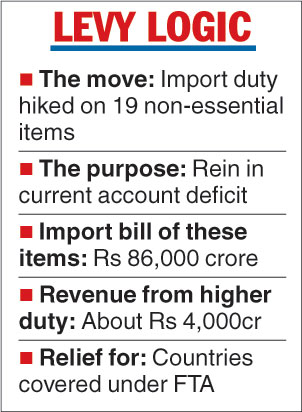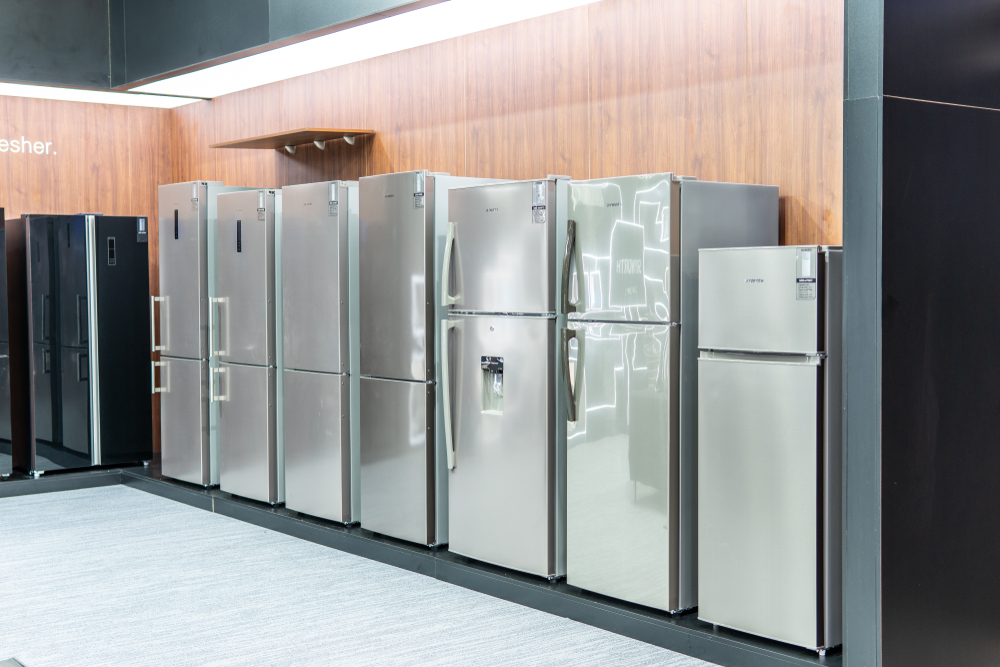The government is expected to garner an additional revenue of about Rs 4,000 crore in the current financial year following the hike in import duty on 19 non-essential items aimed at narrowing the current account deficit.
“The significant increase in customs duties of selective items, which the government perceives to be non-essential imports, appears to be aimed at reducing the drain of currency reserves and boost domestic demand,” said Prashant Deshpande, partner at Deloitte India.
The total import bill on account of shipment of these items into the country last fiscal was Rs 86,000 crore, the ministry said.
However, noted economist Pronab Sen said, “The value of import of these items does not seem to be much and the measure seems more a defensive step to protect the domestic industry from dumping by China and the US because of their ongoing trade war.”
In August, the government had doubled the import duty on as many as 328 textile products to 20 per cent to boost domestic manufacturing and prevent dumping.
The move to hike duties, primarily consumer goods, comes days ahead of the festive season when demand picks up.
However, industry sources said a significant portion of the consumer goods comes from countries with which India has free trade agreements (FTAs) such as the Asean bloc and duties cannot be imposed on them. Further, the duties would not dampen the demand for premium products as they are sought for their superior technology.

The Telegraph
Soumya Kanti Ghosh, chief economist at the State Bank of India, in a research report had said, “It is absolutely crucial to promote exports as a long-term strategy as controlling imports is only a short term solution.”
Petroleum, crude and products, electronic goods, electrical and non-electrical machinery and gold are the major components in the country’s export basket, occupying more than 50 per cent of the share.
The share of electronic goods has increased to 12.3 per cent now from 8 per cent in 2014-15. The share of gold has remained almost constant at around 8 per cent. The share of machinery, electrical and non-electrical goods has marginally increased by one per cent to 7 per cent, the SBI research report said.
Niti Aayog vice-chairman Rajiv Kumar said, “In 2013, the same sort of thing had been done. These are steps to assure all that the government is ready to take steps to control the CAD. But the key is to increase exports.”











